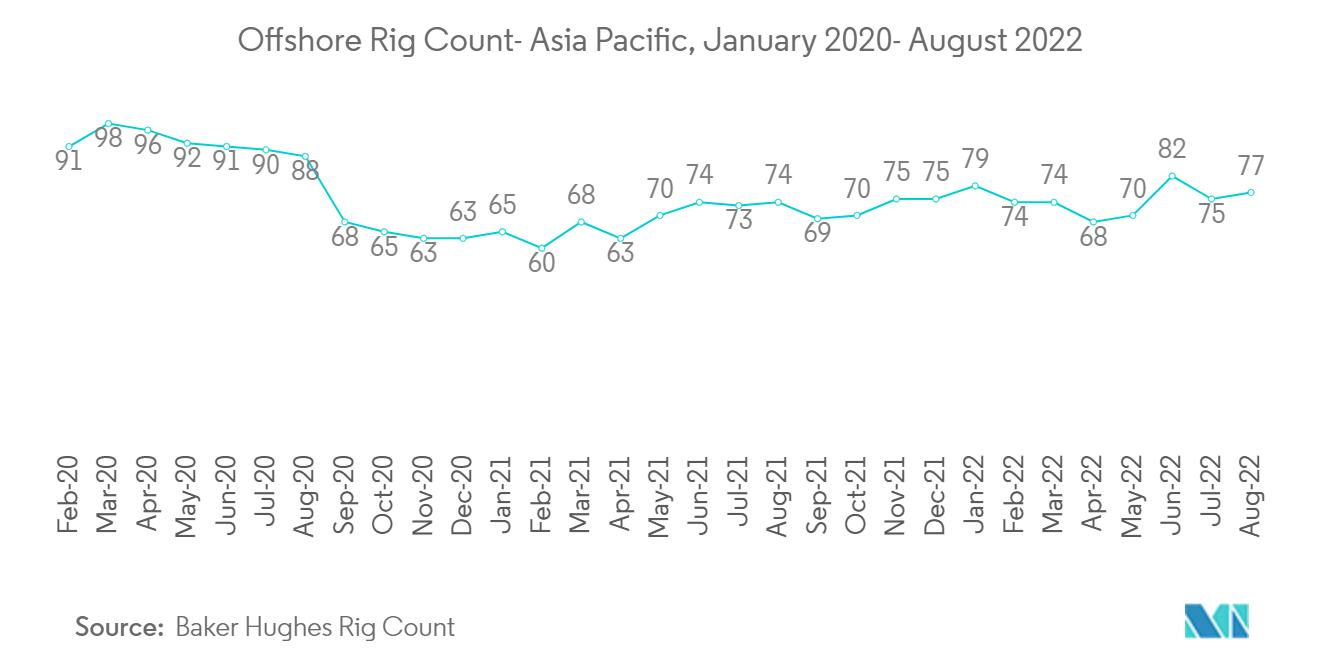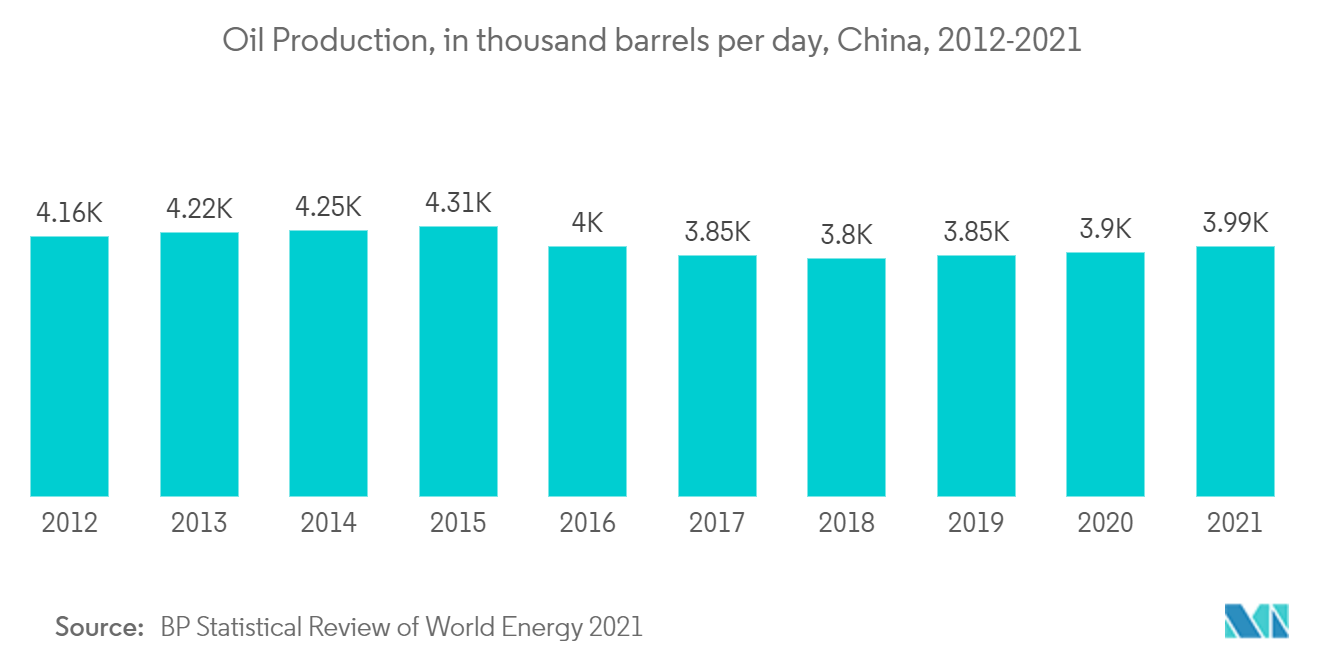Market Trends of Asia-Pacific Drilling Industry
This section covers the major market trends shaping the Asia- Pacific Drilling market according to our research experts:
Offshore segment to be the fastest-growing segment
- As most countries in the Asia-Pacific region have relatively smaller onshore reserves, most of these reserves have been commercially exploited. As demand for energy grows, most countries in the region have focused on the development of riskier offshore reserves to satiate domestic demand.
- The offshore sector was hit especially hard by the pandemic when several large offshore projects were either delayed or canceled due to a decline in energy demand, negatively impacting project economics. Despite this, as the global economy recovers from the economic effects of the pandemic, coupled with the disruptive effect of the Russia-Ukraine conflict in global energy markets, the demand for offshore drilling services is expected to grow steadily during the forecast period.
- According to Baker Hughes international rig count, since February 2021, when offshore drill rig count in the Asia-Pacific region fell to 60, the lowest number since July 2012, offshore rig numbers have rebounded by nearly 28.3% to 77 during August 2022.
- In September 2022, Diamond Offshore Drilling announced that they had won a contract from Inpex Australia for its Ocean Apex semi-submersible in the Northwest Shelf of Australia. The scope of the contract covers 2 wells and is expected to commence in Q3 2023.
- Similarly, in April 2022, Maersk Drilling was awarded a 1-year contract extension for its ultra-deepwater semi-submersible rig Maersk Deliverer. The contract was offered by Inpex for carrying out drilling operations in the Ichthys field in the Browse Basin offshore Western Australia. The contract extension is expected to commence in July 2023, with an option for an additonal one-year extension.
- In May 2022, Shelf Drilling was awarded a 3-year contract for its F.G. McClintock jack-up rig by Oil and Natural Gas Corporation (ONGC) for drilling in the Mumbai High, offshore India. The contract is expected to commence in Q1 2023.
- Such large drilling contracts demonstrate the steady influx of revenue in the Offshore segment of the Asia-PAcific drilling market, which is expected to grow at a steady pace and be the fastest-growing market segment during the forecast period.

China to emerge as the largest geographical segment in the market
- China is the largest energy consumer globally. However, due to relatively smaller conventional hydrocarbon reserves, the country is heavily dependent on energy imports. To reduce its dependence on energy imports, the country has been investing heavily to maximise the potential of its domestic reserves.
- According to BP Statistical Review of World Energy 2021, China produced 209.2 Bcm (billion cubic metres) of natural gas and 3994 thousand barrels/day of crude oil during 2021, while it consumed 378.7 bcm of natural gas, and 15,442 thousand barrels/day of crude oil during 2021. Moreover, domestic hydrocarbon production has also been falling steadily.
- To bridge this massive gap in domestic production and consumption, while China has been investing heavily in E&P (exploration and production) activities to increase domestic production, a major factor driving the demand for drilling services in the country during the forecast period.
- One of the primary strategies adopted by the Chinese government has been the development and commercialisation of unconventional reserves. China has significant shale reserves, but shale oil accounts for only about 35 thousand barrels/day (~1%) of the country's total oil production. This is primarily due to high breakevens and non-commercial economics of shale production technology, but the Chinese stae-backed companies are investing massively in the commercialisation of the technology.
- In July 2022, China's state-owned oil company CNOOC announced that it had tapped commercial oil and gas flows from a shale exploration well in the South China Sea, the first offshore shale well. According to CNOOC, the Beibu Gulf region holds nearly 8.76 billion barrels of shale oil, and after the commercial discovery, development is expected to accelerate, driving higher investments in the sector.
- Similarly, in September 2021, PetroChina announced that it planned to produce nearly 20,000 bpd of shale oil in 2025 from Gulong, an uncoventional shale reserve in the Songliao basin. According to PetroChina, the field has proven geological reserves of more than 9 billion barrels.
- Hence, driven by high domestic demand, and efforts to develop and commercialise China's massive untapped shale potential, the country is expected to drive the demand for drilling services in the region during the forecast period.


